new posts in all blogs
Number of Readers that added this blog to their MyJacketFlap: 1
A few years ago, my book Under the Snowwas featured in the Festival of Trees at the Concord Museum in Concord, MA. To celebrate the holiday season, I’m going to leave you with a photo of that gorgeous tree.
Animals by the Numbers: A Book of Infographics by Steve Jenkins
Bubonic Panic: When Plague Invaded America by Gail Jarrow
Masters of Disguise: Amazing Animal Tricksters by Rebecca L. Johnson
Pink Is for Blobfish: Discovering the World's Perfectly Pink Animals by Jess Keating
Women in Science: 50 Fearless Pioneers Who Changed the World by Rachel Ignotofsky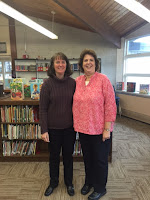
Recently, I spent a fantastic day with the third graders at Marguerite Small School in West Yarmouth, MA. Why was it so great? Because of the hard work of this woman—school librarian Kim Keith—and her colleagues, especially Shannon Carlson, who took most of the pictures below.
On the day of my visit, the students were ready for some fun. They got firsthand experience comparing their jumping ability to that of a frog.
Right now, 2018 seems far, far into the future. Still, I’m giddy with anticipation.
Here are a few studies Sarah did last summer, before she even had a contract. Now that’s dedication!
Aren’t the shells lovely? I can hardly wait to see the art for the book.
Both Sarah and I have been enamored with shells since childhood. I spent my summers beachcombing the sandy shores of Cape Cod, and Sarah enjoyed searching the rocky beaches of Penobscot Bay in Maine.
In some ways, I’ve been researching this book for most of my life. I’ve had the pleasure of spending countless hours exploring seashores all over the world, from Costa Rica to Mexico and the Galápagos Islands, from Hawaii, Great Britain, and Kenya to Vancouver Island, Canada.
Here are a couple of photos taken by traveling companions at moments when they were amused by my enthusiasm for shells and all the amazing creatures that call them home.
As you can see, creating this book was a labor of love.
Pictures that Go Beyond the Words
On Thursday and Friday, I was honored to learn and share with the fantastic grade 3-5 students at Thompson School in Arlington, MA. We compared our writing processes and discussed the challenges we faced as writers. We practiced my four-step revision process. And we talked about why, oh why, it took 10 long years for me to write No Monkeys, No Chocolate—and what inspired me not to give up.
My favorite moment was when this fifth grader showed me a visual model she had created to summarize the information and ideas in No Monkeys, No Chocolate.
It's so amazing that I know you'll want to see it up close:
In my quest for an answer, I interviewed teachers, librarians, and kids. I compared what students were doing in school to my own process. And I discovered two important facts.
http://celebratescience.blogspot.com/2016/02/behind-books-getting-ready-to-research_24.html
http://celebratescience.blogspot.com/2016/03/behind-books-getting-ready-to-research.html
http://celebratescience.blogspot.com/2016/03/behind-books-getting-ready-to-research_9.html
http://celebratescience.blogspot.com/2016/03/behind-books-getting-ready-to-research_16.html
http://celebratescience.blogspot.com/2016/03/behind-books-getting-ready-to-research-6.html
Vulture View by April Pulley Sayre
View Next 25 Posts
Viewing Blog: Celebrate Science, Most Recent at Top
Results 1 - 25 of 735
Welcome teachers, librarians, homeschoolers and nonfiction writers! This blog offers innovative resources for teaching science and tips for writing nonfiction.Statistics for Celebrate Science
Number of Readers that added this blog to their MyJacketFlap: 1
By: Melissa Stewart,
on 12/20/2016
Blog: Celebrate Science (Login to Add to MyJacketFlap)
JacketFlap tags: Writing Life, Add a tag
Blog: Celebrate Science (Login to Add to MyJacketFlap)
JacketFlap tags: Writing Life, Add a tag
For the next week and a half, I’m looking forward to plenty of fun family festivities. But I’ll be back on January 4 with an exciting announcement. I have a feeling that 2017 is going to be a fantastic year.
0 Comments on Happy Holidays! as of 12/21/2016 1:30:00 AM
Add a Comment
By: Melissa Stewart,
on 12/18/2016
Blog: Celebrate Science (Login to Add to MyJacketFlap)
JacketFlap tags: Book List, Add a tag
Blog: Celebrate Science (Login to Add to MyJacketFlap)
JacketFlap tags: Book List, Add a tag
Sorry, folks, I just couldn't narrow it down to five titles. So here are my six favorites in alphabetical order.
Animals by the Numbers: A Book of Infographics by Steve Jenkins
Bubonic Panic: When Plague Invaded America by Gail Jarrow
Masters of Disguise: Amazing Animal Tricksters by Rebecca L. Johnson
Pink Is for Blobfish: Discovering the World's Perfectly Pink Animals by Jess Keating
Women in Science: 50 Fearless Pioneers Who Changed the World by Rachel Ignotofsky
1 Comments on My 6 Favorite STEM Books of 2016, last added: 12/29/2016
Display Comments
Add a Comment
By: Melissa Stewart,
on 12/15/2016
Blog: Celebrate Science (Login to Add to MyJacketFlap)
JacketFlap tags: School Visits, Add a tag
Blog: Celebrate Science (Login to Add to MyJacketFlap)
JacketFlap tags: School Visits, Add a tag
Recently, I spent a fantastic day with the third graders at Marguerite Small School in West Yarmouth, MA. Why was it so great? Because of the hard work of this woman—school librarian Kim Keith—and her colleagues, especially Shannon Carlson, who took most of the pictures below.
The students read several of my books in advance and did activities to reinforce the information and ideas. Here are a couple of examples:
They learned that, based on their height, if they could jump like a frog, they’d be able to leap over TWO school buses! And then they discussed how a frog’s locomotion helped it survive in the world.
I wish I had a photo of 70 third graders sticking out their tongues. That was their introduction to the idea that if they had a tongue like a frog, they could use it to wash out their bellybuttons. Pretty handy, right?
Then we transitioned into how a book is made. I showed them a rough draft, and we compared it to the text in the printed book.
I showed them a couple of illustrator Higgins Bond’s rough sketches and we had a great conversation about some of the changes she made and why they were important. After all, in a nonfiction book, everything in the words AND the pictures has to be accurate.
Oh yes, there was one more thing. Mrs. Zabielski’s class helped me with a super secret project. Here’s a sneak peek:
Curious? Too bad you’ll have to wait a few months to find out more.
Happy Friday!
0 Comments on A Great School Visit as of 12/16/2016 1:07:00 AM
Add a Comment
By: Melissa Stewart,
on 12/13/2016
Blog: Celebrate Science (Login to Add to MyJacketFlap)
JacketFlap tags: Writing Nonfiction, Behind the Books, Add a tag
Blog: Celebrate Science (Login to Add to MyJacketFlap)
JacketFlap tags: Writing Nonfiction, Behind the Books, Add a tag
For me, writing is a fun adventure. A game to play. A puzzle to solve. A challenge to overcome.
But many students don’t feel the same way. According to them, research is boring. Making a writing plan is a waste of time. And revision is more than frustrating. It’s downright painful.
Why do young writers have a point of view that’s so completely different from mine? While there’s probably no single answer to this question, I think having an authentic audience is one factor.
When I begin writing, I know exactly who my audience is. I’m excited to share information with them. And in many cases, they respond with their thoughts and ideas.
For this blog, my audience is you. I know you are reading because I see my Blogger stats. You respond on social media, and sometimes by leaving comments or sending emails.
For my children’s books, the ultimate audience is kids, of course. But most of the time, they depend on gatekeepers who put the books in their hands. So the gatekeepers are my audience too.
For my children’s books, the ultimate audience is kids, of course. But most of the time, they depend on gatekeepers who put the books in their hands. So the gatekeepers are my audience too.
I know people are reading my books because I see reviews in journals and online. Eventually, I see sales figures. Kids respond by sending me letters, by asking probing questions at school visits, and sometimes, by dragging their parents to book signings. Gatekeepers respond via social media and by inviting me to their schools and conferences.
These responses are different from the ones I get from my critique group and editors. Sure, they read my work too, but it’s their job to find fault with it. While I appreciate and depend on their feedback, it’s far less rewarding than the reactions I get from my true audience, my authentic audience.
Students often don’t have an authentic audience. Their teacher is like my editor. And if peer critiquing or buddy editing is part of their process, those classmates are like my critique group.
How can we give young writers the kind of experiences professional writers have when they write for and get responses from an authentic audience? Here are a couple of ideas:
1. Share writing with younger students. Encourage the younger students to comment on what they hear in words and pictures or by making an audio or video recording.
2. Create a classroom blog and encourage students in other classes and/or parents to read the posts and leave meaty comments.
If you have other suggestions, please share them in the comments below. I know there are lots of ways we can make this happen for our students.
1 Comments on Behind the Books: Who’s Your Audience?, last added: 12/29/2016
Display Comments
Add a Comment
By: Melissa Stewart,
on 12/11/2016
Blog: Celebrate Science (Login to Add to MyJacketFlap)
JacketFlap tags: Book List, Add a tag
Blog: Celebrate Science (Login to Add to MyJacketFlap)
JacketFlap tags: Book List, Add a tag
The Curious World of Calpurnia Tate by Jacqueline Kelly
The Evolution of Calpurnia Tate by Jacqueline Kelly
The Fourteenth Goldfish by Jennifer L. Holm
The Thing About Jellyfish by Ali Benjamin
When You Reach Me by Rebecca Stead
0 Comments on Quintets for Curious Kids: 5 Great STEM-themed Middle-grade Novels Especially for Girls as of 12/14/2016 5:11:00 AM
Add a Comment
By: Melissa Stewart,
on 12/8/2016
Blog: Celebrate Science (Login to Add to MyJacketFlap)
JacketFlap tags: Expository nonfiction, Nonfiction Read Alouds, Book List, Narrative Nonfiction, Add a tag
Blog: Celebrate Science (Login to Add to MyJacketFlap)
JacketFlap tags: Expository nonfiction, Nonfiction Read Alouds, Book List, Narrative Nonfiction, Add a tag
Last year, around this time, I wrote a blog post encouraging schools to participate in The Sibert Smackdown! as a way of building enthusiasm for the ALA Youth Media Awards. It was so popular, that I’ve decided to do it again.
Here’s how it works.
First, students in grades 3-5 read two nonfiction picture books from the Mock Sibert list below, which was influenced by the Mock Sibert lists posted by literacy and curriculum coordinator Alyson Beecher on Kid Lit Frenzy, literacy specialist Michele Knott on Mrs. Knott’s Book Nook, and the folks at Anderson’s Bookstore. You should check out all these lists, which include additional information about each book. (The lists created by Alyson and Anderson’s also feature long-form nonfiction titles.)
Ada's Violin: The Story of the Recycled Orchestra of Paraguay by Susan Hood; Illustrated by Sally Wern Comport (Simon & Schuster)
Fearless Flyer: Ruth Law and Her Flying Machine by Heather Lang; Illustrated by Raul Colon (Calkins Creek)
The Kid from Diamond Street: The Extraordinary Story of Baseball Legend Edith Houghton by Audrey Vernick; Illustrated by Steven Salerno (Clarion Books)
I Dissent: Ruth Bader Ginsburg Makes Her Mark by Debbie Levy; Illustrated by Elizabeth Baddeley (Simon & Schuster)
Whoosh!: Lonnie Johnson's Super-Soaking Stream of Inventions by Chris Barton; Illustrated by Don Tate (Charlesbridge)
After reading two of the title, children evaluate and compare them, recording their thinking on a worksheet like this one, which is a kid-friendly version of the real Sibert criteria (actual criteria are available here):
When students are done, they can share their responses with classmates. Or the worksheets can be posted, so that other students can use the information to help them make book choices.
When students are done, they can share their responses with classmates. Or the worksheets can be posted, so that other students can use the information to help them make book choices.
If time permits, students could do multiple rounds of this activity to select grade level or whole school favorites. The Sibert Award committee will announce the winner and honor titles on Monday, January 23, 2017, at the ALA Youth Media Awards ceremony.
Note: You can find a more printable version of the Sibert Smackdown! worksheet on my pinterest Reading Nonfiction Board: https://www.pinterest.com/mstewartscience/
1 Comments on Sibert Smackdown!, last added: 12/29/2016
Display Comments
Add a Comment
By: Melissa Stewart,
on 12/6/2016
Blog: Celebrate Science (Login to Add to MyJacketFlap)
JacketFlap tags: Writing Life, Revision, Add a tag
Blog: Celebrate Science (Login to Add to MyJacketFlap)
JacketFlap tags: Writing Life, Revision, Add a tag
One of the most important steps of my writing process is sharing my rough draft with my critique group. We meet twice a month at a library near my home.
Many students have a similar step in their writing process. Some schools call it peer review. Others call it buddy editing. Some schools don’t really have a specific name for this step. Students just know they’re supposed to swap their paper with a classmate when they’re ready for feedback.
But let’s face it. Getting feedback isn’t always easy. We work long and hard on our drafts. We make them as good as they can possibly be, and sometimes we think they may not need much revision at all. It’s human nature.
And that’s why when we do get feedback—sometimes significant feedback—it can be hard to take. We might feel like we’re being attacked and be tempted to defend our choices. But that would be a mistake because the more we talk, the less we hear.
Let me say that again, this time in the second person, because it’s really important: The more you talk, the less you hear.
And that’s why, when it’s my turn to receive feedback, I pretend that I have a big piece of duct tape over my mouth. That’s right, I implement “The Duct Tape Rule.” It helps me remember that my job is to be open to criticism.
I need to listen carefully to what my critique teammates are saying. If I don’t agree, I keep my doubts to myself. I scrawl down all their ideas as fast as I can.
Later, when I look back at those notes, I can decide how to proceed. I can decide which suggestions feel right to me and which to let go. But if I haven’t listened carefully to the ideas, if I haven’t written them down, they will be lost forever, and they can’t possibly help me improve my writing.
As I’m sitting quietly at my computer, days or weeks after the critique, I’m grateful for those notes. I’m grateful for those ideas because most of the time they do help. A lot. And that’s why an imaginary roll of duct tape will always be in my writer’s toolbox.
3 Comments on Behind the Books: The Duct Tape Rule, last added: 12/29/2016
Display Comments
Add a Comment
By: Melissa Stewart,
on 12/4/2016
Blog: Celebrate Science (Login to Add to MyJacketFlap)
JacketFlap tags: Book List, Add a tag
Blog: Celebrate Science (Login to Add to MyJacketFlap)
JacketFlap tags: Book List, Add a tag
The Great Trouble by Deborah Hopkinson
Ninjas, Piranhas, and Galileo by Greg Leitch Smith
Scat by Carl Hiassen
The Universe of Fair by Leslie Bulion
2 Comments on Quintets for Curious Kids: 5 Great STEM-themed Middle-grade Novels, last added: 12/29/2016
Display Comments
Add a Comment
By: Melissa Stewart,
on 12/2/2016
Blog: Celebrate Science (Login to Add to MyJacketFlap)
JacketFlap tags: Expository nonfiction, Add a tag
Blog: Celebrate Science (Login to Add to MyJacketFlap)
JacketFlap tags: Expository nonfiction, Add a tag
If you’re a fan of Feathers: Not Just for Flying, I have some great news, which I can FINALLY make public. Publisher's Weekly has recently announced a companion title, which will be called Seashells: More than a Home. It will be illustrated by Sarah S. Brannen and published by Charlesbridge in Summer 2018.
Right now, 2018 seems far, far into the future. Still, I’m giddy with anticipation.
Here are a few studies Sarah did last summer, before she even had a contract. Now that’s dedication!
Aren’t the shells lovely? I can hardly wait to see the art for the book.
Both Sarah and I have been enamored with shells since childhood. I spent my summers beachcombing the sandy shores of Cape Cod, and Sarah enjoyed searching the rocky beaches of Penobscot Bay in Maine.
In some ways, I’ve been researching this book for most of my life. I’ve had the pleasure of spending countless hours exploring seashores all over the world, from Costa Rica to Mexico and the Galápagos Islands, from Hawaii, Great Britain, and Kenya to Vancouver Island, Canada.
Here are a couple of photos taken by traveling companions at moments when they were amused by my enthusiasm for shells and all the amazing creatures that call them home.
 |
| Haena State Park, Hanalei Bay, Kauai, Hawaii, January 2015 |
 |
| Botanical Beach, Provincial Park, Vancouver Island, British Columbia, Canada, June 2015 |
7 Comments on A New Book, last added: 12/29/2016
Display Comments
Add a Comment
By: Melissa Stewart,
on 11/30/2016
Blog: Celebrate Science (Login to Add to MyJacketFlap)
JacketFlap tags: Research, Handout, Add a tag
Blog: Celebrate Science (Login to Add to MyJacketFlap)
JacketFlap tags: Research, Handout, Add a tag
Building Research Skills in K-3
Author-educator Melissa Stewart introduces scaffolded visual, information, and digital literacy activities to help K-3 students develop the observational, inquiry, and critical thinking skills required to evaluate print and digital resources for nonfiction reports. Supports Common Core RIT Standards 6 and 7 and Writing Standards 7 and 8.
Recommended Books
Encouraging Observation
Where’s Walrus? by Steve Savage
Duck! Rabbit! by Amy Krause Rosenthal
Wave by Suzy Lee
Fossil by Bill Thomson
The Girl and the Bicycle by Mark Peet
Great blog post with suggestions for wordless picture book read alouds:
Great blog post with suggestions for wordless picture book read alouds:
Blackout by John Rocco
One Day, The End by Rebecca Kai Dotlich
Where in the Wild by David M. Schwartz
Pictures that Go Beyond the Words
A Couple of Boys Have the Best Week Ever by Marla Frazee
Redwoods by Jason Chin
Visual Teaching Strategies Method
I use images from picture books I’ve written (A Place for Turtles, Feathers: Not Just for Flying, When Rain Falls, Under the Snow), but you can use illustrations from any illustrated book, fiction or nonfiction.
Ask students:
--What do you think is happening in this picture?
--What do you see that makes you say that?
After a class discussion, encourage students to think about how they might have drawn the art differently if they were the illustrator. If time permits, invite the children to draw their version of the art.
Ask students:
--What do you think is happening in this picture?
--What do you see that makes you say that?
After a class discussion, encourage students to think about how they might have drawn the art differently if they were the illustrator. If time permits, invite the children to draw their version of the art.
Extracting Content-Area Information
Sample Question: How do animals depend on the place where they live?
Book Pair: Just Ducks by Nicola Davies & Hip-pocket Papa by Sandra Markle
Sample Wonder Statement: I wonder how a rain forest is different from a desert.
Book Pair: The Great Kapok Tree by Lynne Cherry & Here Is a Southwestern Desert by Madeliene Dunphy
For more samples and book suggestions: Perfect Pairs: Using Fiction & Nonfiction Picture Books to Teach Life Science, K-2 by Melissa Stewart & Nancy Chesley
For more samples and book suggestions: Perfect Pairs: Using Fiction & Nonfiction Picture Books to Teach Life Science, K-2 by Melissa Stewart & Nancy Chesley
Books with Designs that Convey an Extra Layer of Information
Move! by Steve Jenkins
Mosquito Bite by Alexandra Siy
The Day-Glo Brothers by Chris Barton
How Design Affects Our Thoughts
Guide students in understanding the importance of designers in creating the visuals we see every day. How can our thoughts and feelings be manipulated with visuals, such as in advertisements and website homepages?
How Design Affects Our Thoughts
Guide students in understanding the importance of designers in creating the visuals we see every day. How can our thoughts and feelings be manipulated with visuals, such as in advertisements and website homepages?
Tricks for Evaluating Websites
Point out the three letter domain names at the end of website addresses. Let them know that these three letters can tell them who created the site and what the creator's main objective is for the site.
Encourage students to ask themselves, "What is the first thing my eye notices when I look at this website?" Help them understand that their answer to this question can help them assess the reliability of a website.
Recommended Blog Posts on this Topic
http://celebratescience.blogspot.com/2016/02/behind-books-getting-ready-to-research.html
http://celebratescience.blogspot.com/2016/02/behind-books-getting-ready-to-research_24.html
http://celebratescience.blogspot.com/2016/03/behind-books-getting-ready-to-research.html
http://celebratescience.blogspot.com/2016/03/behind-books-getting-ready-to-research_9.html
http://celebratescience.blogspot.com/2016/03/behind-books-getting-ready-to-research_16.html
http://celebratescience.blogspot.com/2016/03/behind-books-getting-ready-to-research-6.html
Point out the three letter domain names at the end of website addresses. Let them know that these three letters can tell them who created the site and what the creator's main objective is for the site.
Encourage students to ask themselves, "What is the first thing my eye notices when I look at this website?" Help them understand that their answer to this question can help them assess the reliability of a website.
Recommended Blog Posts on this Topic
http://celebratescience.blogspot.com/2016/02/behind-books-getting-ready-to-research.html
http://celebratescience.blogspot.com/2016/02/behind-books-getting-ready-to-research_24.html
http://celebratescience.blogspot.com/2016/03/behind-books-getting-ready-to-research.html
http://celebratescience.blogspot.com/2016/03/behind-books-getting-ready-to-research_9.html
http://celebratescience.blogspot.com/2016/03/behind-books-getting-ready-to-research_16.html
http://celebratescience.blogspot.com/2016/03/behind-books-getting-ready-to-research-6.html
0 Comments on Christa McAuliffe Technology Conference Handout as of 12/14/2016 1:59:00 AM
Add a Comment
By: Melissa Stewart,
on 11/29/2016
Blog: Celebrate Science (Login to Add to MyJacketFlap)
JacketFlap tags: Research, Teachers College Reading and Writing Project, Add a tag
Blog: Celebrate Science (Login to Add to MyJacketFlap)
JacketFlap tags: Research, Teachers College Reading and Writing Project, Add a tag
According to new findings from the Teachers College Reading and Writing Project at Columbia University, the best nonfiction writing occurs when early-elementary research experiences are scaffolded as follows:
1. Organize and categorize information
(a) based on personal experiences
(b) on a topic they care deeply about
(a) based on personal experiences
(b) on a topic they care deeply about
2. Organize, categorize, and compare observations.
3. Conduct guided research.
4. Conduct cold research.
For the past few weeks, I’ve been looking at each of these steps in detail and suggesting activity ideas.
For step 4, students choose a topic they’re passionate about and conduct research with the support of their classroom teacher, literacy coach, and school librarian. By now, they have the skills they need to find facts in books and online articles. They may also be ready to consider other kinds of sources. Encourage students to think outside the box.
For example, if students are writing about an animal, can they observe it in its natural setting? If the animal lives in your area, they may be able to find it and watch it. They may also be able to locate a webcam that show the animal going about its daily routine.
If students are writing about a social studies topic, can they visit a local historical society or museum? What can they learn from artifacts? Can they interview people who are knowledgeable about their topic. The more creatively students think about their research process, the more invested they will become in their topic, and their enthusiasm will definitely shine through in their written report.
0 Comments on Behind the Books: Stepping Up to Research, Step 4 as of 12/14/2016 4:31:00 AM
Add a Comment
By: Melissa Stewart,
on 11/27/2016
Blog: Celebrate Science (Login to Add to MyJacketFlap)
JacketFlap tags: Book List, Add a tag
Blog: Celebrate Science (Login to Add to MyJacketFlap)
JacketFlap tags: Book List, Add a tag
Everybody Needs a Rock by Byrd Baylor
If You Find a Rock by Peggy Christian
A Rock Can Be by Laura Purdie Salas
A Rock Is a Lively by Dianna Hutts Aston
Rocks in His Head by Carol Otis Hurst
0 Comments on Quintets for Curious Kids: 5 Great Books about Rocks as of 12/14/2016 4:33:00 AM
Add a Comment
By: Melissa Stewart,
on 11/22/2016
Blog: Celebrate Science (Login to Add to MyJacketFlap)
JacketFlap tags: Add a tag
Blog: Celebrate Science (Login to Add to MyJacketFlap)
JacketFlap tags: Add a tag
By: Melissa Stewart,
on 11/20/2016
Blog: Celebrate Science (Login to Add to MyJacketFlap)
JacketFlap tags: Book List, Add a tag
Blog: Celebrate Science (Login to Add to MyJacketFlap)
JacketFlap tags: Book List, Add a tag
Army Ant Parade by April Pulley Sayre
The Great Kapok Tree by Lynne Cherry
No Monkeys, No Chocolate by Melissa Stewart
Rain, Rain, Rain Forest by Brenda Z. Guiberson
Red-eyed Tree Frog by Joy Cowley
0 Comments on Quintets for Curious Kids: 5 Great Picture Books about Rain Forests as of 12/14/2016 2:13:00 AM
Add a Comment
By: Melissa Stewart,
on 11/17/2016
Blog: Celebrate Science (Login to Add to MyJacketFlap)
JacketFlap tags: Book List, Add a tag
Blog: Celebrate Science (Login to Add to MyJacketFlap)
JacketFlap tags: Book List, Add a tag
The Animal Book by Steve Jenkins
Seriously, this book is in a class all by itself, so run right out and buy it as a holiday gift for all the curious kids in your life.
0 Comments on THE Best Book Ever for Kids Who Love to Learn About Animals as of 1/1/1900
Add a Comment
By: Melissa Stewart,
on 11/15/2016
Blog: Celebrate Science (Login to Add to MyJacketFlap)
JacketFlap tags: Research, Teachers College Reading and Writing Project, Add a tag
Blog: Celebrate Science (Login to Add to MyJacketFlap)
JacketFlap tags: Research, Teachers College Reading and Writing Project, Add a tag
According to new findings from the Teachers College Reading and Writing Project at Columbia University, the best nonfiction writing occurs when early-elementary research experiences are scaffolded as follows:
1. Organize and categorize information
(a) based on personal experiences
(b) on a topic students care deeply about
(a) based on personal experiences
(b) on a topic students care deeply about
2. Organize, categorize, and compare observations.
3. Conduct guided research.
4. Conduct cold research.
For Step 3, students write about a topic the class is studying. This is a great chance to integrate ELA with your science or social studies curriculum.
At the beginning of the unit, draw your class’s attention to a Wonder Wall that you created on a classroom bulletin board. Let the children know that as they study the topic, they will probably have lots of questions. Encourage students to record these questions on sticky notes and add them to a Wonder Wall.
If a question is answered during the remaining part of the unit, jot the answer on another sticky note and place it next to the question. At the end of the unit, invite students to choose one of the unanswered questions or develop a new question. Working with the school librarian and a literacy coach, guide the children in researching their questions independently and share their findings with the class.
Next week I’ll take Wednesday off so I can clean my house and go grocery shopping in preparation of for the Thanksgiving festivities, but I’ll be back on November 30 to look Step 4.
0 Comments on Behind the Books: Stepping Up to Research, Step 3 as of 11/16/2016 12:50:00 AM
Add a Comment
By: Melissa Stewart,
on 11/13/2016
Blog: Celebrate Science (Login to Add to MyJacketFlap)
JacketFlap tags: Book List, Add a tag
Blog: Celebrate Science (Login to Add to MyJacketFlap)
JacketFlap tags: Book List, Add a tag
Ada Byron Lovelace and the Thinking Machine by Laurie Wallmark
The Boy Who Loved Math by Deborah Heiligman
Growing Patterns: Fibonacci Numbers in Nature by Sarah C. Campbell
Just a Second by Steve Jenkins
Seeing Symmetry by Loreen Leedy
0 Comments on Quintets for Curious Kids: 5 Great Picture Books for Kids Who Love Math as of 1/1/1900
Add a Comment
By: Melissa Stewart,
on 11/8/2016
Blog: Celebrate Science (Login to Add to MyJacketFlap)
JacketFlap tags: Research, Teachers College Reading and Writing Project, Add a tag
Blog: Celebrate Science (Login to Add to MyJacketFlap)
JacketFlap tags: Research, Teachers College Reading and Writing Project, Add a tag
According to new findings from the Teachers College Reading and Writing Project at Columbia University, the best nonfiction writing occurs when early-elementary research experiences are scaffolded as follows:
1. Organize and categorize information
(a) based on personal experiences
(b) on a topic students care deeply about
(a) based on personal experiences
(b) on a topic students care deeply about
2. Organize, categorize, and compare observations.
3. Conduct guided research.
4. Conduct cold research.
Over the next few weeks, I’ll be looking at each of these steps in detail and suggesting activity ideas.
For Step 2, take a look at your science curriculum. Students could observe and compare soil samples from home and the school playground. They could observe how a plant changes as it grows.
Here’s an activity I love. Collect a dozen rocks or shells. Divide your class into small groups and give each team one of the objects. Ask the children to use words and pictures to describe their object.
As the groups finish, one member should return their object to a central location. Then have each team rotate to a new table, leaving their description behind.
Invite the groups to read the description in front of them and carefully study the drawing. Then the teams should take turns going to the central location. Their task is to select the object they think the first team used to create its description. Encourage students to repeat this process until all the teams have identified the correct object.
0 Comments on Behind the Books: Stepping Up to Research, Step 2 as of 1/1/1900
Add a Comment
By: Melissa Stewart,
on 11/6/2016
Blog: Celebrate Science (Login to Add to MyJacketFlap)
JacketFlap tags: Book List, Add a tag
Blog: Celebrate Science (Login to Add to MyJacketFlap)
JacketFlap tags: Book List, Add a tag
Feathers: Not Just for Flying by Melissa Stewart
Look Up! Bird-Watching in Your Own Backyard by Annette LeBlanc Cate
Mysterious Patterns: Finding Fractals in Natureby Sarah C. Campbell
Raindrops Roll by April Pulley Sayre
Swirl by Swirl: Spirals in Nature by Joyce Sidman
0 Comments on Quintets for Curious Kids: 5 Great Picture Books for Kids Who Love to Explore as of 11/7/2016 1:53:00 AM
Add a Comment
By: Melissa Stewart,
on 11/3/2016
Blog: Celebrate Science (Login to Add to MyJacketFlap)
JacketFlap tags: Writing Life, Revision, Revision Timeline, Add a tag
Blog: Celebrate Science (Login to Add to MyJacketFlap)
JacketFlap tags: Writing Life, Revision, Revision Timeline, Add a tag
Recently, a teacher tweeted me with this question:
When kids revise, their changes may not be improvements. How can we lead them to make their manuscripts better?
That’s a great question, but it’s not something that can be answered in 140 characters. And in fact, I’m not sure there’s an answer—at least not one teachers will like—at all.
I think that the only honest answer is that revision is messy, and sometimes our attempts to re-envision our writing are complete and utter failures. That’s why writing is hard.
As I describe in this Revision Timeline, creating the picture book No Monkeys, No Chocolate was a 10-year journey. When I share this timeline with students, they always ask the same question: “Does it always take so long to write a book?”
No, it doesn’t. But for most of the picture books I write, the journey from inspiration to publication is far longer than most people expect. Here are some stats:
Can an Aardvark Bark? (coming in 2017), 7 years
Feathers: Not Just for Flying, 8 years
Pipsqueaks, Slowpokes, and Stinkers: Celebrating Animal Underdogs (coming in 2018), 7 years
A Place for Butterflies, 5 years
Summertime Sleep (coming in 2019), 8 years
Under the Snow, 5 years
For each of these manuscripts, I wrote draft after draft after draft. And I openly admit that some of those drafts were worse than the ones that came before them.
When it comes to writing, not every attempt is an improvement. Not every idea pans out, and you know what, that’s okay. It’s part of the process. Like I said, writing is hard.
But it’s also important. For more and more people, being able to clearly express information and ideas in writing is a critical job skill. And that’s why I think the best thing a writing teacher can do is:
Be a Coach
A good coach knows how to help players improve by giving them the right advice at the right moment. Writing teachers can do this by building a classroom collection of mentor texts and handing students titles that will address specific writing elements that they are struggling with.
For nonfiction, the collection should include books with:
—various formats and text structures
—different writing styles (narrative and expository)
—different voices (lyrical, lively, and various options in between)
For nonfiction, the collection should include books with:
—various formats and text structures
—different writing styles (narrative and expository)
—different voices (lyrical, lively, and various options in between)
—various points of view (first, second, and third)
—strong verbs
—rich use of language devices (alliteration, onomatopoeia, similes and metaphors, etc.)
Coaches also teach strategies by going over past games play by play. Writing teachers can use old student work to showcase how those writers chose a clever format or used voice well or included strong verbs.
Be a Role Model
Time and again, when I do writing workshops in schools, I see that the classes that do the best are the ones where the teacher participates. She pays attention to what I’m saying. She takes notes. She asks questions. And most importantly, she writes right alongside her students.
As she writes, she verbalizes the things that are challenging her. She asks her students for advice and suggestions. She encourages them to consult with one another. She shows them that writing is a struggle for everyone, and yet, it’s something that is worthy of her time—and theirs.
Be a Cheerleader
When students feel frustrated or defeated, writing teachers can spur kids on. They can encourage young writers to keep trying by sharing examples of their own setbacks and successes. They can also share the trials and tribulations that professional writers discuss on their blogs or social media. When students see that the adults around them struggle with writing, that it's just part of the process, they can learn to move past the frustration the feel and experience their own successes.
0 Comments on Three Tips for Writing Teachers as of 11/4/2016 1:43:00 AM
Add a Comment
By: Melissa Stewart,
on 11/1/2016
Blog: Celebrate Science (Login to Add to MyJacketFlap)
JacketFlap tags: Research, Teachers College Reading and Writing Project, Add a tag
Blog: Celebrate Science (Login to Add to MyJacketFlap)
JacketFlap tags: Research, Teachers College Reading and Writing Project, Add a tag
According to new findings from the Teachers College Reading and Writing Project at Columbia University, the best nonfiction writing occurs when early-elementary research experiences are scaffolded as follows:
1. Organize and categorize information
(a) based on personal experiences
(b) on a topic students care deeply about
(a) based on personal experiences
(b) on a topic students care deeply about
2. Organize, categorize, and compare observations.
3. Conduct guided research.
4. Conduct cold research.
Over the next few weeks, I’ll be looking at each of these steps in detail and suggesting activity ideas.
For Step 1, topics like “My Baby Brother” or “My Dog” or “My Mom” or “My School” work best. These are topics kids know about as a result of their everyday interactions. So the struggle isn’t related to gathering information, it’s related to organizing it into a piece of writing that flows in a logical way. (As an added bonus, this assignment might teach children knew about their relationships or family dynamics.)
This kind of assignment works better than “write what you know” because young students might think they know a lot about frogs, but when it comes down to it, there are bound to be gaps in their knowledge, and that’s a problem at this level.
This assignment also works better than “write something you could teach” because, let’s face it, rehashing the rules of soccer is pretty boring.
0 Comments on Behind the Books: Stepping Up to Research, Step 1 as of 11/2/2016 12:53:00 AM
Add a Comment
By: Melissa Stewart,
on 10/30/2016
Blog: Celebrate Science (Login to Add to MyJacketFlap)
JacketFlap tags: Book List, Add a tag
Blog: Celebrate Science (Login to Add to MyJacketFlap)
JacketFlap tags: Book List, Add a tag
Owl Moon by Jane Yolen
The Snail’s Spell by Joanne Ryder
The Salamander Room by Anne Mazer
The Promise by Nicola Davies
Tadpole’s Promise by Jeanne Willis
0 Comments on Quintets for Curious Kids: 5 Great Fiction Picture Books for Young Nature Lovers as of 10/31/2016 1:11:00 AM
Add a Comment
By: Melissa Stewart,
on 10/27/2016
Blog: Celebrate Science (Login to Add to MyJacketFlap)
JacketFlap tags: School Visits, Add a tag
Blog: Celebrate Science (Login to Add to MyJacketFlap)
JacketFlap tags: School Visits, Add a tag
There are so many reasons I love my job. I love researching. I love writing. And this week, especially, I love school visits.
On Thursday and Friday, I was honored to learn and share with the fantastic grade 3-5 students at Thompson School in Arlington, MA. We compared our writing processes and discussed the challenges we faced as writers. We practiced my four-step revision process. And we talked about why, oh why, it took 10 long years for me to write No Monkeys, No Chocolate—and what inspired me not to give up.
My favorite moment was when this fifth grader showed me a visual model she had created to summarize the information and ideas in No Monkeys, No Chocolate.
It's so amazing that I know you'll want to see it up close:
Wow, I'm so impressed. Thank you, Thompson School. You made me week totally fantastico!
0 Comments on School Visit Success as of 1/1/1900
Add a Comment
By: Melissa Stewart,
on 10/25/2016
Blog: Celebrate Science (Login to Add to MyJacketFlap)
JacketFlap tags: Research, Teachers College Reading and Writing Project, Add a tag
Blog: Celebrate Science (Login to Add to MyJacketFlap)
JacketFlap tags: Research, Teachers College Reading and Writing Project, Add a tag
About a year ago, Ellen Brandt, the school librarian at Westford Middle School in Westford, MA, shared this Wordle with me:
1. Real research is active and self driven. It requires creative thinking.
2. It’s difficult to create authentic research experiences for early elementary students.
And so I developed some fun activities to help early-elementary students develop research skills without them even realizing it. If you’re interested in what I came up with, check out these links:
http://celebratescience.blogspot.com/2016/02/behind-books-getting-ready-to-research_24.html
http://celebratescience.blogspot.com/2016/03/behind-books-getting-ready-to-research.html
http://celebratescience.blogspot.com/2016/03/behind-books-getting-ready-to-research_9.html
http://celebratescience.blogspot.com/2016/03/behind-books-getting-ready-to-research_16.html
http://celebratescience.blogspot.com/2016/03/behind-books-getting-ready-to-research-6.html
But still, I wanted to dig deeper. And that’s why I was so excited to hear about some new findings from Colleen Cruz, a staff developer at the Teachers College Reading and Writing Project at Columbia University. Here’s what they found.
The best nonfiction writing occurs when early-elementary research experiences are scaffolded as follows:
1. Organize and categorize information
(a) based on personal experiences
(b) on a topic students care deeply about
(a) based on personal experiences
(b) on a topic students care deeply about
2. Organize, categorize, and compare observations.
3. Conduct guided research.
4. Conduct cold research.
I’ll provide more details about each of these steps over the next few weeks.
0 Comments on Behind the Books: Stepping Up to Research as of 1/1/1900
Add a Comment
By: Melissa Stewart,
on 10/23/2016
Blog: Celebrate Science (Login to Add to MyJacketFlap)
JacketFlap tags: Book List, Add a tag
Blog: Celebrate Science (Login to Add to MyJacketFlap)
JacketFlap tags: Book List, Add a tag
An Egg is Quiet by Dianna Hutts Aston
No Two Alike by Keith Baker
Planting the Wild Garden by Kathryn O. Gailbraith
Trout Are Made of Trees by April Pulley Sayre
Vulture View by April Pulley Sayre
0 Comments on Quintets for Curious Kids: 5 Great Nonfiction Picture Books for Young Nature Lovers as of 10/24/2016 1:46:00 AM
Add a Comment
View Next 25 Posts






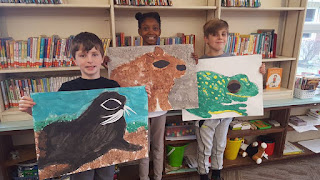








































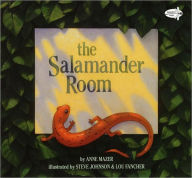
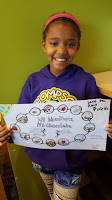

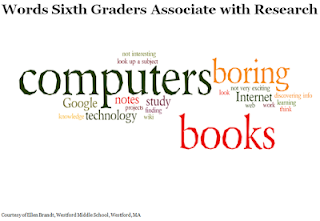

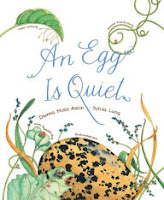
Great selections, Melissa!! I would have a hard time picking my 5 favorites too! The only one I haven't yet read is Bubonic Panic, but I own a copy, and must get to that right away :)!